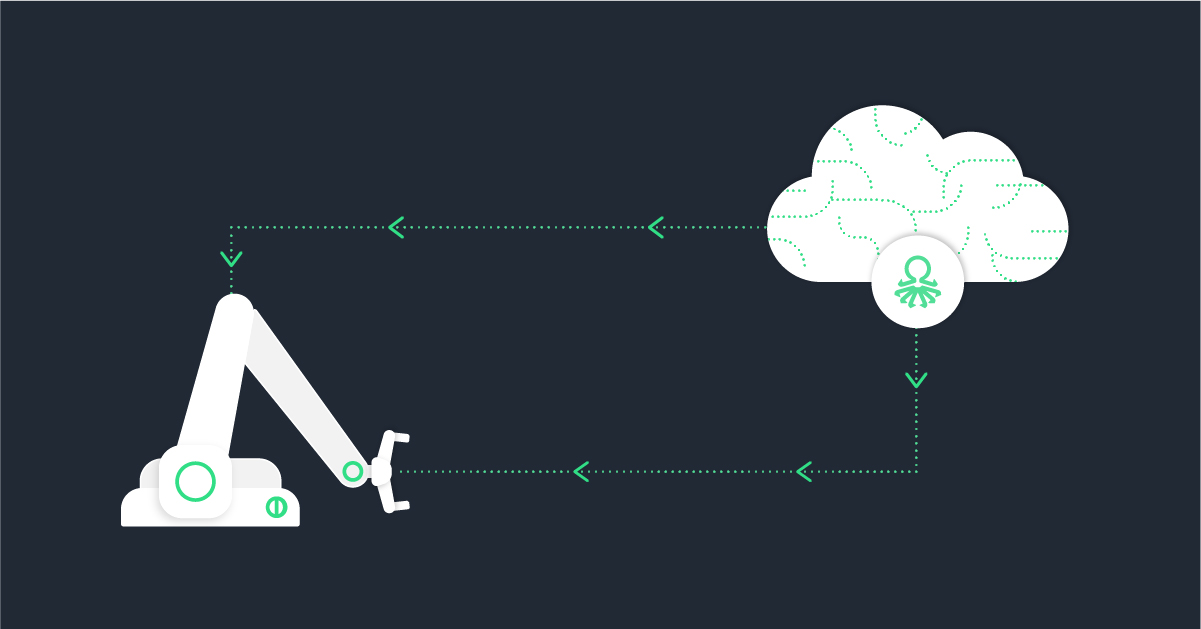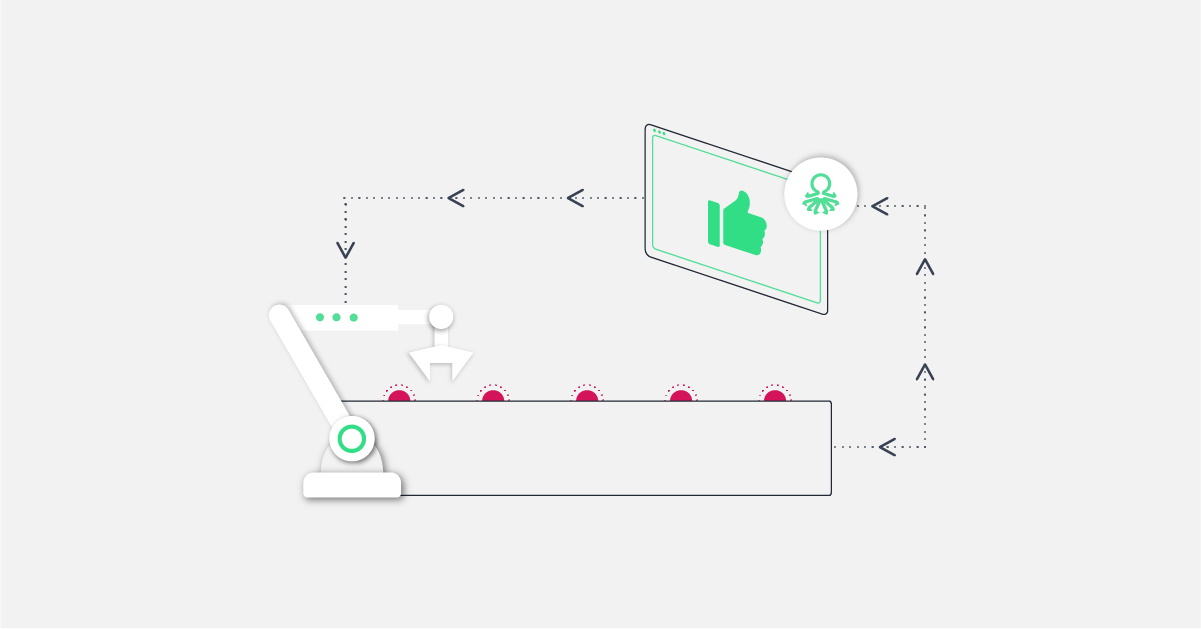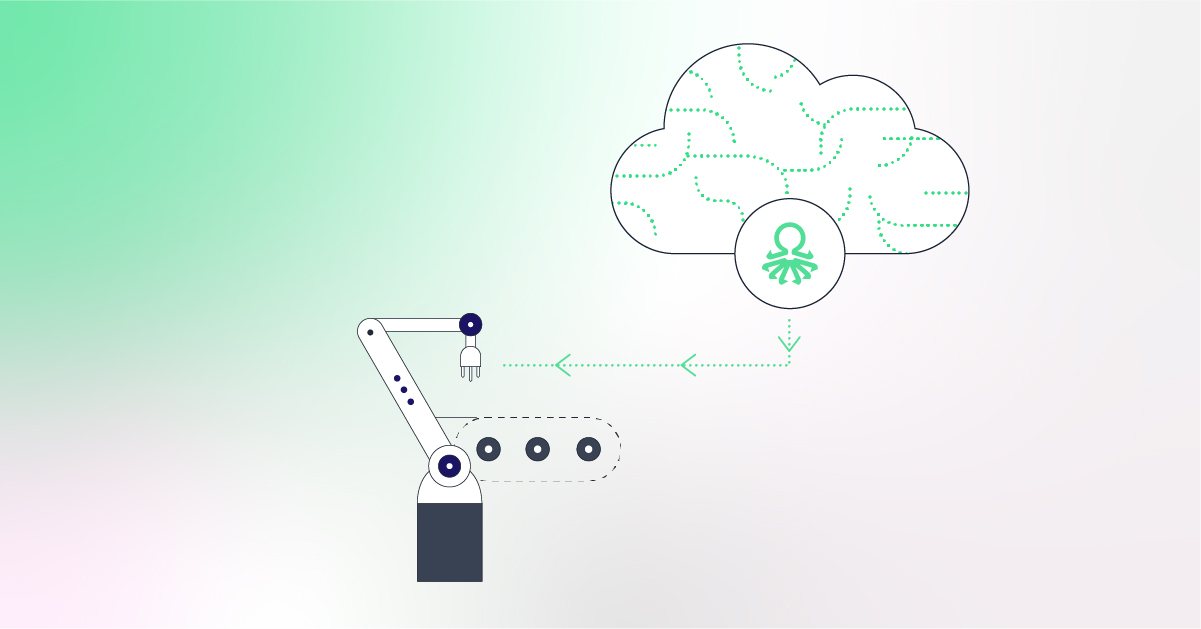Electronics manufacturing is known for its focus on precision and efficiency. A single mistake can create a faulty unit, and a faulty unit represents a loss.
The rise of Industry 4.0 has revolutionized production lines across the world. Today, the focus is on big data, and using that big data to generate actionable insights that lead to measurable improvements in the manufacturing process.
The coming of Industry 4.0 is exactly why electronics manufacturers need to embrace growing technologies, like predictive analytics, that decrease production losses and increase efficiency—solutions that leverage data and deep insights with minimal technical expertise required.
Today, we’re going to examine the vital question: how is AI used in manufacturing? We’ll go over several applications of machine learning in manufacturing as well as discuss business benefits that accompany these new solutions.
AI in Manufacturing: The Rise of IoT and Industry 4.0
The Internet of Things (IIoT) is so much more than a tool for changing music and ordering products. IoT technology has revolutionized the manufacturing industry through the rise of Industry 4.0.
Thanks to IoT technology, companies can now use AI and machine learning to achieve their digital twin, streamline maintenance, implement generative design, leverage computer vision, improve inventory management, and optimize all aspects of risk management.
But all of these interconnected devices come at a cost. Today, there’s more data than ever before. Data that covers virtually every step of the manufacturing process. And with access to more data than ever, companies need smart solutions that are capable of generating actionable insights from that data.
Take, for example, predictive analytics in electronics manufacturing. Companies can use manufacturing data from the production line to track faulty units. All of this is made possible because of the interconnectivity enabled by Industry 4.0. Data is produced through every stage of the manufacturing process, that data is fed into predictive models, and turned into insights that improve the decision making process.
Other companies are leveraging machine data to optimize process tuning times to boost operational efficiency and reduce cycle times, machine costs, and technical support costs. They accomplish this using machine learning to produce calibration vectors for each unit, lowering machine cycle times from 40 minutes to mere seconds.
Root cause analysis (RCA) is another key focus of the shift to data-driven analytics. The traditional RCA process requires significant resources to complete properly. And in most cases, a lot of time is spent troubleshooting and trying to determine the cause of failure. But thanks to Industry 4.0, that critical component — the “why” — is far easier to find since each defective unit will contain vital information detailing what went wrong.
AI Process Optimization: Detect Faulty Units Earlier
Most manufacturing industries would benefit greatly by being able to detect and remove faulty units as early as possible in the manufacturing process.
Fortunately, AI solutions for manufacturing include the ability to understand when a faulty unit has been produced and can even remove it as soon as possible.
In fact, one of the AI use cases in manufacturing that save many electronics manufacturers money is early fault detection. Catching faulty units before they finish making their way through the production line saves companies significant resources and time. Instead of finishing a unit that may have been defective from the beginning, all of that capital is instead focused on producing a functioning unit.
Detecting faults early is only one benefit of integrating AI solutions into manufacturing systems. An ideal AI solution will also generate meaningful insights that engineers and managers can review to see why faults are being produced in the first place.
AI use cases in manufacturing vary dramatically, but most of these use cases can be labeled as optimizing manufacturing processes. Optimizing these processes represents a significant gain for companies as doing so reduces inefficiency.
Meaningful Business Benefits of AI in Manufacturing
There are several applications of machine learning in manufacturing out there that provide businesses with unique benefits. Adding AI and machine learning to manufacturing creates an ocean of changes that can radically alter the entire manufacturing process. Doing so creates several meaningful business benefits, such as:
- Reduces waste and loss
- Increases throughput and quality
- Increased production capacity by optimizing the entire production process
- New growth and expansion of product lines due to having an optimized manufacturing process
- Reduced cost due to streamlined maintenance schedules
- Understand more about each machine involved in the process, including its current health and any situations putting unnecessary pressure on that machine
- Efficient inventory management leads to an improved supply chain
- Better quality control at every phase in the production process
Businesses must adopt the right solutions for them In order to reap all of the rewards that come with artificial intelligence and machine learning. Take the time to thoroughly examine any potential AI solution to determine if it’s going to add meaningful business benefits.
Increase Throughput, Decrease Waste
AI and machine learning are poised to continually revolutionize the manufacturing world. As these emerging technologies keep developing, new applications of machine learning in manufacturing will emerge.
Now more than ever, it’s important for manufacturing companies to explore new applications for AI and machine learning in order to ensure increased throughput and decreased waste.
Are you interested in exploring how predictive analytics can transform your production processes? Book a discovery call with Vanti today to get started.





